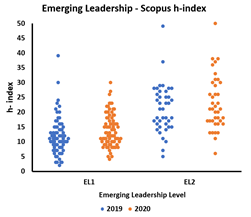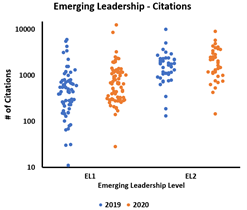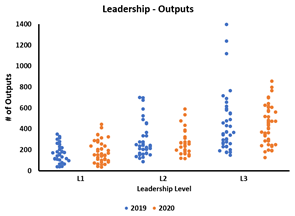The evolution of the NHMRC Investigator Grant awardee
- thegrantedgroup

- Sep 2, 2021
- 2 min read
Updated: Oct 15, 2021
Since commencing on the 5th of December 2018, there have been two NHMRC Investigator Grants funding rounds with the success rate hovering at 13% for the two rounds. Following COVID postponement, the next funding round is now due 31 Mar 2021. As we see more applicants applying for this scheme, clients increasingly want to know where they fit into the Emerging Leadership and Leadership levels and if they truly stand a fair chance given the competitiveness of this scheme.
For NHMRC Investigator Grants, 70% of selection criteria is allocated to an applicant’s track record - split further into Publications (35%), Research Impact (20%) and Leadership (15%). This essentially means that 70% of the assessed criteria should already exist for any applicant before they put pen to paper. Self-assessing this 70% component before committing to drafting an application is essential to saving you time (and money) that could be put to better use by applying to other schemes.
This week we will dive into the 35% Publications to see what “an outstanding record of publications in terms of quality and contribution to science” looks like for successful applicants, relative to opportunity and their field of research. We analysed Scopus h-index, total citations and number of outputs for each of the new NHMRC Investigator Grant Emerging Leadership and Leadership Fellows. Presented below are metrics for both the 2019 and 2020 funding rounds.

While there have not been many changes in terms of author metrics for each level of application, a slight ‘lift’ is seen across the board for all levels except for L2. What does this mean for you? If you are considering an application for this round, this data can help you benchmark your application at a suitable level based on historical data. If you are planning to be ‘application-ready’ in the next few years, this can be a guide to where your author metric needs to be for a competitive chance. Of course - metrics such as these are not the absolute guide, it does still depend on outputs relevant to your field and other measures of impact and leadership that your career can showcase.
Given this year’s expected “Key Changes” recently published, we may also see many applicants forced into higher levels this year than in either 2019 or 2020. This is due to the addition of ‘typical’ academic level (A-E) and years post-PhD for each level. If applicants are applying higher, then we might expect lower median metrics in most levels this round.
In the coming weeks, we will provide our analysis of other publicly available data to better understand other demographics of the various EL and L levels in this scheme. Follow us to learn more!










Comments